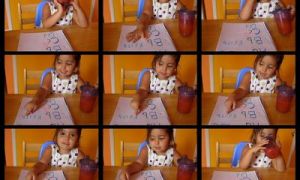Cognitive development in young children refers to the growth of their ability to think and understand the world around them. This involves various cognitive concepts and skills that emerge and evolve as children grow. The following article provides information on Key Cognitive Concepts and Activities To Support Cognitive Development.
Key Cognitive Concepts
1. Object Permanence
-
Definition: The understanding that objects continue to exist even when they cannot be seen, heard, or touched.
-
Example: A child looks for a toy that has been hidden under a blanket, demonstrating their understanding that the toy still exists even though it is out of sight.
2. Cause and Effect
-
Definition: The realization that actions can cause certain outcomes.
-
Example: A child learns that pushing a button on a toy makes it light up and play music.
3. Symbolic Thought
-
Definition: The ability to use symbols, such as words or images, to represent objects and experiences.
-
Example: Engaging in pretend play, such as using a block to represent a car, demonstrates the use of symbolic thought.
4. Classification and Categorization
-
Definition: The ability to group objects based on common characteristics.
-
Example: Sorting toys by color, shape, or size shows a child's ability to classify and categorize objects.
5. Seriation
-
Definition: The ability to arrange objects in a particular order, such as by size or number.
-
Example: A child arranges sticks in order from shortest to longest.
6. Memory and Recall
-
Definition: The ability to remember and retrieve information about past experiences.
-
Example: A child recalls where they last saw their favorite toy or remembers the steps in a familiar routine.
7. Attention and Concentration
-
Definition: The ability to focus on a specific task or activity for a sustained period.
-
Example: A child concentrates on building a block tower without being easily distracted.
8. Problem-Solving
-
Definition: The ability to find solutions to challenges or obstacles.
-
Example: Figuring out how to fit different shapes into a shape sorter or completing a simple puzzle.
9. Language Development
-
Definition: The growth of vocabulary and the ability to understand and use language.
-
Example: Using words to ask for help, describe objects, or tell a simple story.
10. Logical Thinking
-
Definition: The development of reasoning skills and the ability to make logical connections.
-
Example: Understanding that if you have two apples and add two more, you have four apples.
Supporting Cognitive Development
-
Play-Based Learning: Engaging in activities that promote exploration, imagination, and problem-solving.
-
Interactive Reading: Reading books with children and discussing the story to enhance comprehension and vocabulary.
-
Hands-On Activities: Providing opportunities for children to manipulate objects and experiment with cause and effect.
-
Encouraging Curiosity: Answering children's questions and encouraging them to explore their environment.
By supporting these cognitive concepts and providing a stimulating environment, educators and parents can help young children develop essential thinking and learning skills.
Activities To Support Cognitive Development
Supporting cognitive development in young children involves engaging them in activities that stimulate their thinking, problem-solving, and understanding. Here are some activities you can incorporate to promote cognitive development:
1. Puzzle Play
-
Activity: Provide a variety of puzzles (e.g., jigsaw puzzles, shape sorters) for children to solve.
-
Benefits: Enhances problem-solving skills, spatial awareness, and fine motor development.
-
Example: A jigsaw puzzle featuring different animals or a shape sorter with various geometric shapes.
2. Matching and Sorting Games
-
Activity: Use matching cards, sorting objects by color, shape, or size.
-
Benefits: Develops classification skills, visual discrimination, and attention to detail.
-
Example: Matching animal cards or sorting buttons by color and size.
3. Memory Games
-
Activity: Play memory card games where children need to find pairs.
-
Benefits: Improves memory, concentration, and cognitive flexibility.
-
Example: A classic memory card game with pictures of everyday objects.
4. Storytime and Discussion
-
Activity: Read stories and ask open-ended questions about the plot, characters, and settings.
-
Benefits: Enhances language development, comprehension, and critical thinking.
-
Example: Reading "The Very Hungry Caterpillar" by Eric Carle and discussing the stages of the caterpillar's life cycle.
5. Construction and Building Activities
-
Activity: Provide building blocks, LEGO sets, or other construction toys.
-
Benefits: Encourages spatial awareness, creativity, and problem-solving.
-
Example: Building a bridge with wooden blocks or creating a structure with LEGO bricks.
Activities To Support Cognitive Development
Supporting cognitive development in young children involves engaging them in activities that stimulate their thinking, problem-solving, and understanding. Here are some activities you can incorporate to promote cognitive development:
1. Puzzle Play
-
Activity: Provide a variety of puzzles (e.g., jigsaw puzzles, shape sorters) for children to solve.
-
Benefits: Enhances problem-solving skills, spatial awareness, and fine motor development.
-
Example: A jigsaw puzzle featuring different animals or a shape sorter with various geometric shapes.
2. Matching and Sorting Games
-
Activity: Use matching cards, sorting objects by color, shape, or size.
-
Benefits: Develops classification skills, visual discrimination, and attention to detail.
-
Example: Matching animal cards or sorting buttons by color and size.
3. Memory Games
-
Activity: Play memory card games where children need to find pairs.
-
Benefits: Improves memory, concentration, and cognitive flexibility.
-
Example: A classic memory card game with pictures of everyday objects.
4. Storytime and Discussion
-
Activity: Read stories and ask open-ended questions about the plot, characters, and settings.
-
Benefits: Enhances language development, comprehension, and critical thinking.
-
Example: Reading "The Very Hungry Caterpillar" by Eric Carle and discussing the stages of the caterpillar's life cycle.
5. Construction and Building Activities
-
Activity: Provide building blocks, LEGO sets, or other construction toys.
-
Benefits: Encourages spatial awareness, creativity, and problem-solving.
-
Example: Building a bridge with wooden blocks or creating a structure with LEGO bricks.
6. Science Experiments
-
Activity: Conduct simple science experiments, like mixing colors or observing plant growth.
-
Benefits: Fosters curiosity, observation skills, and understanding of scientific concepts.
-
Example: Mixing red and blue paint to see what color they create or planting seeds and observing their growth over time.
7. Art and Craft Projects
-
Activity: Engage children in drawing, painting, and crafting activities.
-
Benefits: Develops fine motor skills, creativity, and symbolic thought.
-
Example: Drawing a picture of their favorite animal or creating a collage from magazine cutouts.
8. Role-Playing and Dramatic Play
-
Activity: Set up a dramatic play area with costumes, props, and themed play sets.
-
Benefits: Encourages imagination, social skills, and understanding of different roles and scenarios.
-
Example: A pretend kitchen or a doctor's office with toy tools and costumes.
9. Counting and Number Games
-
Activity: Use counting games, number puzzles, and board games that involve numbers.
-
Benefits: Enhances numerical understanding, counting skills, and basic math concepts.
-
Example: Counting the number of apples in a picture or playing a board game that involves moving pieces based on dice rolls.
10. Nature Walks and Exploration
-
Activity: Take children on nature walks to explore the environment and discuss what they see.
-
Benefits: Promotes observation skills, vocabulary development, and a connection to nature.
-
Example: Collecting leaves and identifying different types of trees or observing insects and discussing their habitats.
By incorporating these activities into your daily routine, you can create a stimulating environment that supports cognitive development and nurtures children's natural curiosity and love of learning
Further Reading
Cognitive Development for Toddlers 2-3 Year Olds
Cognitive Development for Preschoolers 4-5 Year Olds
Jean Piaget: Cognitive Development
Cognitive Development for Babies 12-24 months
Cognitive Development for Infants 0-12 months
Cognitive Development for School Age


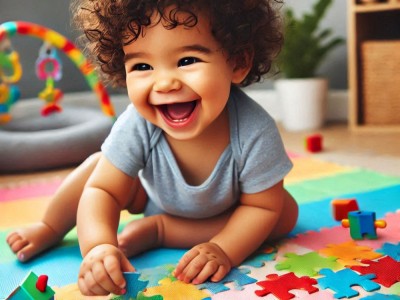
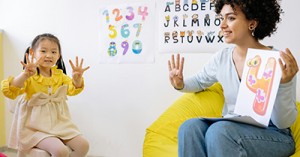

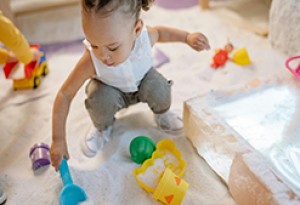

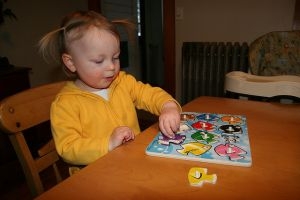 Toddlers have a greater understanding of the world around them by this stage. Their cognitive development (also known as intellectual development and thinking skills) continues
Toddlers have a greater understanding of the world around them by this stage. Their cognitive development (also known as intellectual development and thinking skills) continues Infants begin to develop trust when parents begin to fulfil their needs. Such as changing an infant's nappy when needed, feeding on request and holding
Infants begin to develop trust when parents begin to fulfil their needs. Such as changing an infant's nappy when needed, feeding on request and holding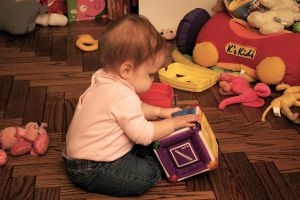 Beginning at birth the construction of thought processes, such as memory, problem solving, exploration of objects etc, is an important part of an infant’s cognitive
Beginning at birth the construction of thought processes, such as memory, problem solving, exploration of objects etc, is an important part of an infant’s cognitive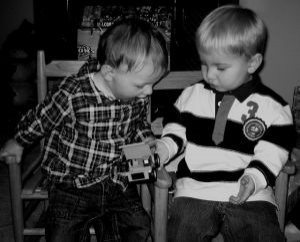 Toddlers want to do more on their own and do not like it when you begin to establish limits on their behaviour. Tantrums can become
Toddlers want to do more on their own and do not like it when you begin to establish limits on their behaviour. Tantrums can become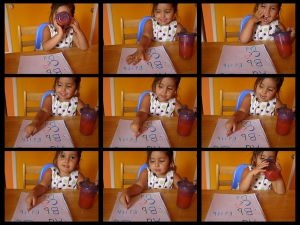 Your preschooler is now able to focus their attention more accurately and is less influenced by distractions. The intensity of questions increase as your child
Your preschooler is now able to focus their attention more accurately and is less influenced by distractions. The intensity of questions increase as your child John Dewey is often seen as the proponent of learning by doing – rather than learning by passively receiving. He believed that each child was active,
John Dewey is often seen as the proponent of learning by doing – rather than learning by passively receiving. He believed that each child was active,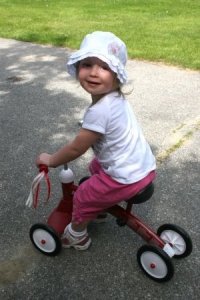 Toddler advance and gains new skills in Gross Motor Development milestones achieved throughout earlier years. Co-ordination and challenges that could not be performed before such
Toddler advance and gains new skills in Gross Motor Development milestones achieved throughout earlier years. Co-ordination and challenges that could not be performed before such Erik Erikson developed a psychosocial theory to understand how we each develop our identities through eight stages of psychosocial development from infancy to adulthood. The
Erik Erikson developed a psychosocial theory to understand how we each develop our identities through eight stages of psychosocial development from infancy to adulthood. The At this point preschoolers begin to interact effectively with others. Play becomes more innovative and organized and “boyfriend” or “girlfriend” begins to emerge. Preschoolers have
At this point preschoolers begin to interact effectively with others. Play becomes more innovative and organized and “boyfriend” or “girlfriend” begins to emerge. Preschoolers have From now, babies begin to identify and respond to their own feelings, understanding other's feelings & needs and interact positively with others. A baby's social and
From now, babies begin to identify and respond to their own feelings, understanding other's feelings & needs and interact positively with others. A baby's social and
